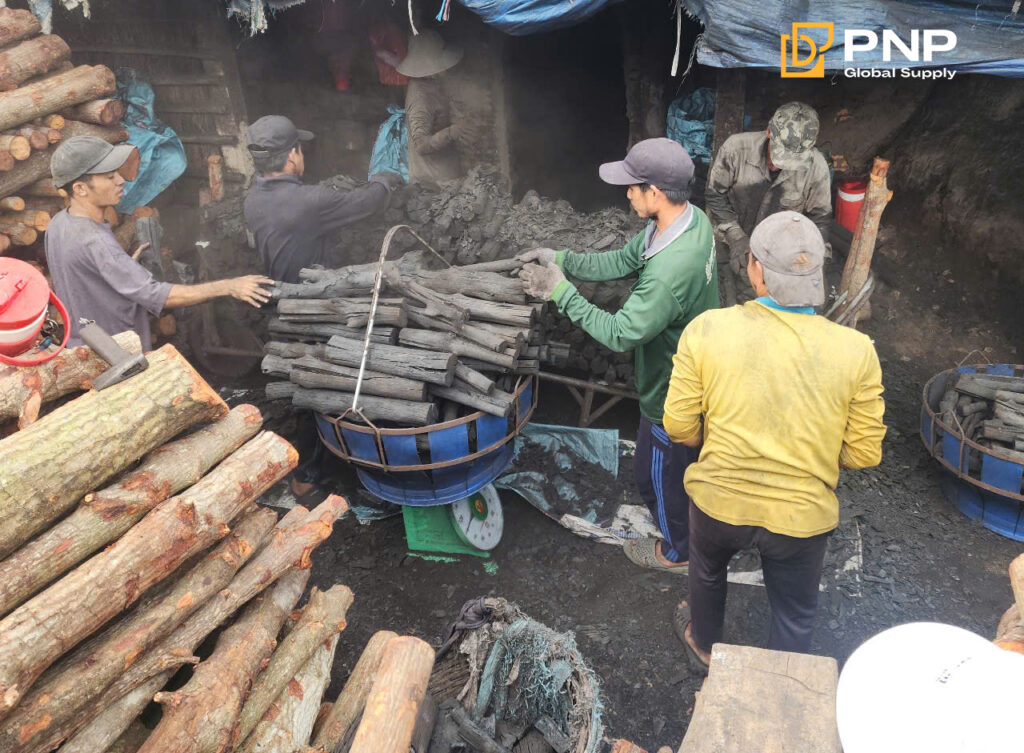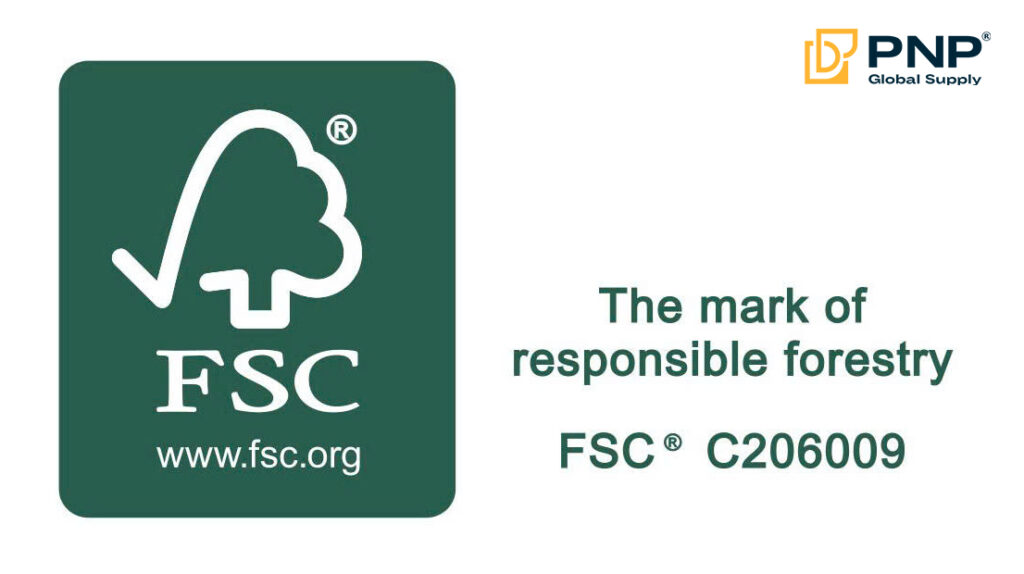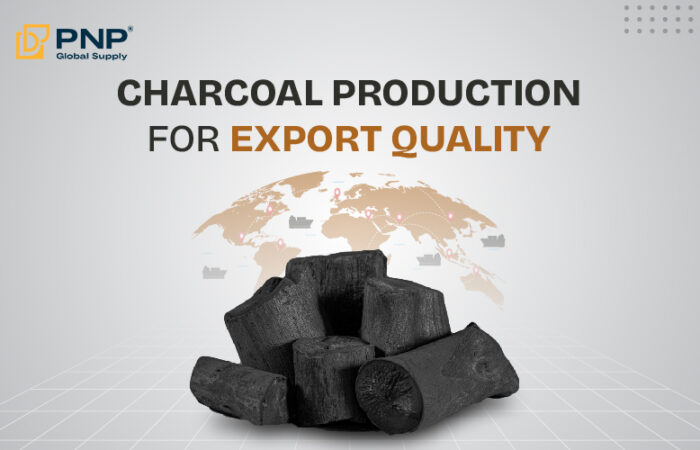In 2025, the global charcoal production industry is at a critical juncture. As demand for charcoal production continues to grow across various sectors—from domestic cooking to industrial metallurgy and premium grilling—so too do the challenges facing producers. Environmental concerns, regulatory pressure, and shifting market expectations are transforming how charcoal production is managed, distributed, and consumed. Yet within these obstacles lie real opportunities for innovation, sustainability, and long-term growth.
This article explores the key challenges and opportunities in charcoal production in 2025, offering insights for producers, exporters, policy-makers, and investors seeking to understand the evolving charcoal landscape.

The Evolving Landscape of Charcoal Production
Charcoal production is one of the oldest methods of converting biomass into fuel. Traditionally made by burning wood or agricultural waste in low-oxygen environments, charcoal remains a primary source of energy in many developing nations and an increasingly popular product in global grilling and industrial markets.
In 2025, the charcoal industry is no longer just a local or informal enterprise—it has become a global network of manufacturers, suppliers, and exporters. However, this expansion comes with serious questions: How sustainable is the industry? What are the environmental costs? And how can stakeholders modernize while maintaining profitability?
Key Production Challenges in 2025
Deforestation and Environmental Impact
One of the most pressing production challenges is the environmental degradation caused by unsustainable wood harvesting. In regions like Sub-Saharan Africa, Southeast Asia, and parts of Latin America, unregulated tree cutting for charcoal has led to alarming rates of deforestation and biodiversity loss.
As governments tighten environmental regulations, producers must shift toward renewable biomass sources—such as coconut shells, coffee husks, and sawdust—or adopt agroforestry practices to ensure long-term raw material supply.
Outdated and Polluting Technologies
A large percentage of charcoal in the global market is still produced using inefficient methods, such as earth kilns or traditional brick kilns. These methods have very low energy efficiency—sometimes as little as 10%—and release significant amounts of greenhouse gases, smoke, and particulate matter.
In 2025, modern alternatives like retort kilns, pyrolysis systems, and hybrid gasification units are becoming more accessible. However, the high upfront cost and lack of technical know-how still prevent many small-scale producers from making the transition.
Labor Conditions and Worker Safety
Another major production challenge involves unsafe labor conditions. Many workers operate in informal settings without protective equipment, health benefits, or proper training. Exposure to smoke, extreme heat, and physical hazards leads to chronic health issues and a high risk of injury.
Improving safety standards, offering skill development programs, and formalizing the labor sector are necessary steps to protect workers and attract a new generation of skilled labor.
Compliance with Regulations and International Standards
Exporters must now navigate a complex web of international regulations related to carbon emissions, forest certification (e.g., FSC), and traceability. Meeting these standards requires time, resources, and documentation—often beyond the capacity of small producers.
Additionally, as climate-related trade policies evolve, countries may impose carbon border taxes or restrict imports of charcoal from unsustainable sources. Non-compliance can mean losing access to lucrative markets in Europe, the Middle East, and North America.

Opportunities Driving the Charcoal Industry Forward
Despite the difficulties, 2025 is a year rich with potential for those willing to innovate and adapt. Let’s explore the key opportunities in the modern charcoal industry.
Demand for Sustainable Charcoal
Eco-conscious consumers and businesses are increasingly looking for sustainable charcoal options. Products made from renewable biomass, certified by environmental organizations, or produced using clean technologies are gaining a competitive edge in the market.
Sustainable charcoal not only reduces carbon emissions but also opens the door to eco-labeling, premium pricing, and access to environmentally regulated markets.
Expansion of the Global Charcoal Market
The charcoal market is expected to grow steadily, with key drivers including:
- The rising popularity of outdoor cooking and premium BBQ culture.
- Growth in the metallurgy sector, where charcoal is used as a reducing agent.
- Increased use of biochar in agriculture to improve soil health and carbon sequestration.
According to market forecasts, the global charcoal market is projected to surpass USD 8 billion by the end of 2025, with the Asia-Pacific and Middle East regions leading demand.
Growth in Charcoal Export Potential
Countries with abundant biomass and improving production capacities—such as Vietnam, Indonesia, Nigeria, and Brazil—are becoming major players in charcoal export. Exporters that can guarantee quality, consistency, and sustainability are building long-term partnerships with buyers in the EU, Japan, South Korea, and the Gulf countries.
In Vietnam, for example, the shift toward premium products like coconut shell charcoal and coffee charcoal has boosted the country’s global reputation and improved profitability.
Explore more in Top 5 Wood Charcoal Exporting Countries Worldwide
Innovation in Charcoal Supply Chains
Digitization is transforming the charcoal supply chain. Technologies such as blockchain and cloud-based inventory systems are helping producers track raw material origins, optimize logistics, and ensure full traceability.
This transparency is particularly important for international buyers who want proof of sustainability and ethical sourcing. Companies that invest in smarter supply chains are also more resilient to disruptions, such as raw material shortages or logistics delays.

Towards a Cleaner and Smarter Charcoal Industry
The future of charcoal production lies in innovation. Here are some strategies producers and stakeholders are using to build a more sustainable and competitive industry:
- Adoption of Cleaner Technologies
Transitioning from earth kilns to retort kilns or carbonization units improves efficiency by up to 30-40%, reduces emissions, and shortens production time. Financial support from governments and NGOs can help accelerate this transition for small producers.
- Raw Material Diversification
Using agricultural waste such as rice husks, palm kernel shells, bamboo, and coconut shells reduces pressure on forests and aligns with circular economy principles. These materials also produce cleaner-burning charcoal, which is preferred in premium markets.
- Certification and Branding
Obtaining certifications such as FSC, Rainforest Alliance, or local government sustainability marks builds trust with buyers. Branding products as “eco-friendly,” “organic,” or “sustainably sourced” adds value and attracts a higher-paying customer base.
Policy and Community Involvement
Governments and communities play a vital role in the future of charcoal. Effective policies should:
- Provide incentives for clean energy adoption.
- Support education and training for safe and modern charcoal production.
- Enforce laws against illegal logging while supporting community forestry.
- Promote international cooperation for technology exchange and market access.
At the grassroots level, local cooperatives, NGOs, and producer networks can help smallholders share knowledge, access funding, and enter global markets together.
Conclusion
In 2025, charcoal production faces a dual reality. On one hand, outdated practices, environmental degradation, and labor challenges threaten the industry’s sustainability. On the other, rising global demand, clean technologies, and green consumer trends offer unprecedented opportunities.
Producers who embrace innovation, sustainability, and quality will not only survive—but thrive. The key is to see challenges not as barriers, but as catalysts for change. With the right vision and support, the charcoal industry can become a model of responsible production in the years ahead.
________________________________
Contact us for more information
Facebook: PNP Charcoal
Instagram: PNP Charcoal
Email: info@pnpglobalsupply.com




